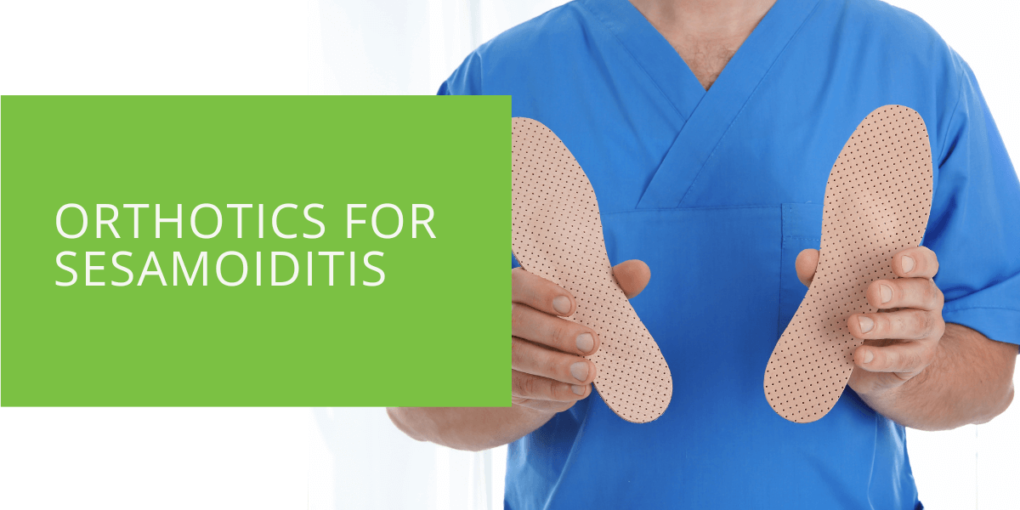Orthotics for Sesamoiditis
Sesamoiditis presents a significant challenge for those affected, causing discomfort and hindering mobility. The condition arises from inflammation of the sesamoid bones, nestled beneath the big toe joint. In this article, we delve into orthotics' pivotal role in mitigating sesamoiditis symptoms and restoring foot health.
Key Takeaways
- Custom orthotic insoles provide targeted support and cushioning to alleviate pressure on the sesamoid bones, effectively relieving sesamoiditis.
- Orthotics should be incorporated gradually into daily activities, starting with short wear periods and ensuring proper footwear to accommodate them.
- Long-term management of sesamoiditis involves proactive measures such as maintaining a healthy weight, wearing supportive footwear, and engaging in foot-strengthening exercises.
Understanding Sesamoiditis
Sesamoiditis manifests when the tiny sesamoid bones, crucial for smooth big toe movement, become inflamed or irritated. These bones, located within the tendons under the base of the big toe, bear considerable weight during activities like walking and running. Excessive pressure, overuse, or injury can trigger inflammation, leading to sesamoiditis. Individuals with certain foot structures, such as high arches or flat feet, are more predisposed to this condition.
Diagnosing Sesamoiditis
Identifying sesamoiditis entails a comprehensive evaluation by a podiatrist. This typically involves a physical examination to assess symptoms like localized tenderness and swelling around the sesamoid bones. To confirm the diagnosis, imaging tests like X-rays may be ordered to visualize any abnormalities or fractures in the sesamoid bones. Seeking timely medical attention is crucial to prevent further complications and expedite healing.
Treatment Options for Sesamoiditis
Conservative Treatments
- Rest and Ice: Resting the affected foot and applying ice packs help alleviate pain and reduce inflammation. Minimizing weight-bearing activities and applying ice for 15-20 minutes several times daily can relieve stress.
- Padding and Taping: Utilizing pads or tape to cushion and support the sesamoid bones can alleviate pressure and discomfort during movement.
- Pain Management: Over-the-counter pain relievers like ibuprofen or acetaminophen may be recommended to manage pain and inflammation.

Orthotic Solutions
Orthotics, particularly custom-designed insoles or inserts, offer an effective solution for sesamoiditis management. These devices provide targeted support and cushioning to alleviate pressure on the sesamoid bones and optimize foot biomechanics. Custom orthotic insoles are meticulously crafted based on an individual's foot structure and gait patterns, ensuring optimal fit and support.
Custom Orthotics vs. Over-the-Counter Insoles
While over-the-counter insoles may temporarily relieve mild sesamoiditis, custom orthotics deliver superior support and customization. Podiatrists tailor custom orthotics to address specific foot issues, such as arch height or pronation, effectively reducing strain on the sesamoid bones and enhancing overall foot function.
Design Features of Orthotic Insoles for Sesamoiditis Relief
- Metatarsal Pads: These specialized pads redistribute pressure away from the sesamoid bones, reducing pain and inflammation.
- Arch Support: Proper arch support helps maintain foot alignment and distributes weight evenly, alleviating stress on the forefoot.
- Shock Absorption: Orthotic insoles with shock-absorbing properties cushion the foot during walking or activities, minimizing the impact on the sesamoid bones.
- Foam Density and Cushioning: Soft yet supportive foam materials provide comfort and cushioning, enhancing overall foot comfort.
Incorporating Orthotics into Daily Activities
Adapting to orthotic inserts requires patience and gradual integration into daily routines. Start by wearing orthotics for short periods, gradually increasing wear time as your feet adjust. Choosing supportive footwear that accommodates orthotics and provides adequate cushioning and stability is essential. Avoid high heels and narrow-toed shoes, as they can exacerbate sesamoiditis by increasing pressure on the forefoot.
Long-Term Management and Prevention
Preventing the recurrence of sesamoiditis entails proactive measures and lifestyle adjustments. This includes wearing supportive footwear with ample cushioning and arch support, maintaining a healthy weight to reduce pressure on the feet, and engaging in activities that promote foot health, such as stretching exercises and low-impact workouts. Regular follow-up appointments with a podiatrist can help monitor foot health and promptly address any emerging concerns.
Conclusion
Orthotics offer a valuable solution for managing sesamoiditis symptoms and enhancing foot function. At ePodiatrists, we specialize in custom orthotic solutions tailored to your unique needs. Our experienced podiatrists can design orthotics to alleviate pressure on the sesamoid bones and promote optimal foot biomechanics, helping you find long-lasting relief from foot pain. Schedule an appointment today and take the first step towards healthier, pain-free feet.
Schedule your appointment today and take the first step towards healthier, pain-free feet.
Remember, we're here to support you on your journey to optimal foot health.

